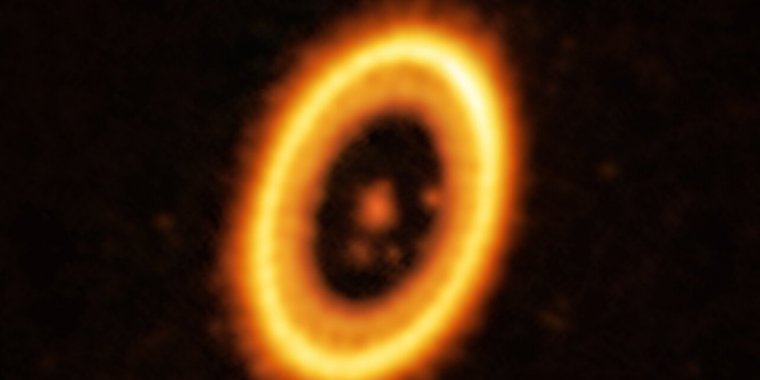| News / Space News |
Does this exoplanet have a sibling sharing the same orbit?
Using the Atacama Large Millimeter/submillimeter Array (ALMA), astronomers have found the possible ‘sibling’ of a planet orbiting a distant star. The team has detected a cloud of debris that might be sharing this planet’s orbit and which, they believe, could be the building blocks of a new planet or the remnants of one already formed.

A planet and its Trojan orbiting a star in the PDS 70 system. Photo: ESO
“Two decades ago it was predicted in theory that pairs of planets of similar mass may share the same orbit around their star, the so-called Trojan or co-orbital planets. For the first time, we have found evidence in favour of that idea,” says Olga Balsalobre-Ruza, a student at the Centre for Astrobiology in Madrid, Spain who led the paper.
Trojans, rocky bodies in the same orbit as a planet, are common in our own Solar System, the most famous example being the Trojan asteroids of Jupiter — more than 12 000 rocky bodies that are in the same orbit around the Sun as the gas giant.
Astronomers have predicted that Trojans, in particular Trojan planets, could also exist around a star other than our Sun, but evidence for them is scant.
Now, an international team of scientists have used ALMA, to find the strongest observational evidence yet that Trojan planets could exist — in the PDS 70 system.
This young star is known to host two giant, Jupiter-like planets, PDS 70b and PDS 70c.
By analysing archival ALMA observations of this system, the team spotted a cloud of debris at the location in PDS 70b’s orbit where Trojans are expected to exist.
Trojans occupy the so-called Lagrangian zones, two extended regions in a planet's orbit where the combined gravitational pull of the star and the planet can trap material.
Studying these two regions of PDS 70b’s orbit, astronomers detected a faint signal from one of them, indicating that a cloud of debris with a mass up to roughly two times that of our Moon might reside there.
The team believes this cloud of debris could point to an existing Trojan world in this system, or a planet in the process of forming. (ESO)
YOU MAY ALSO LIKE





